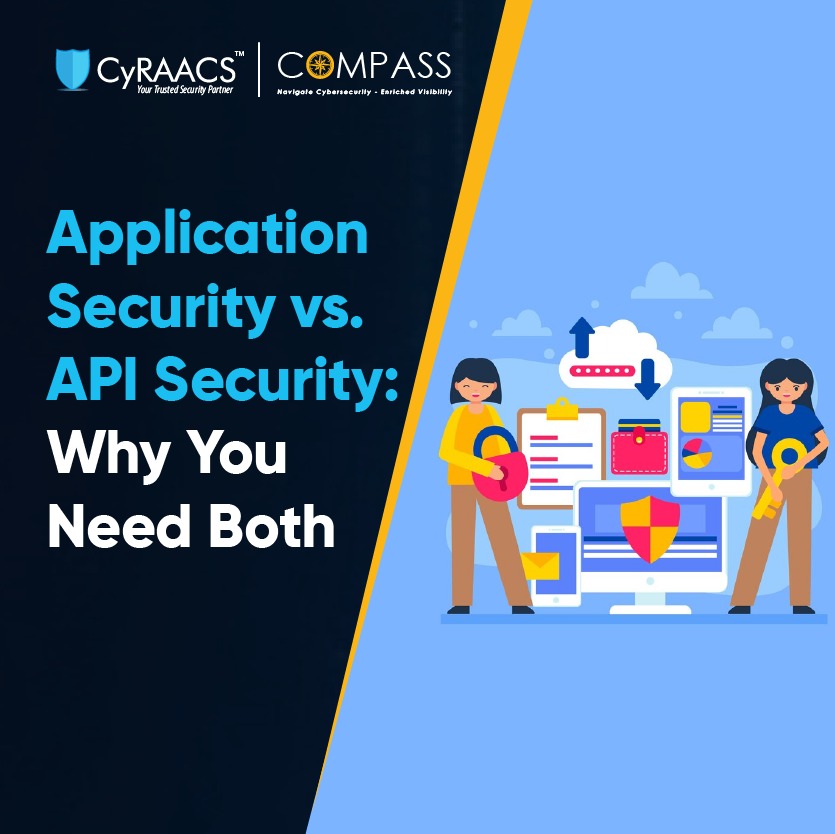
In the rise of cloud-native apps, and rapid adoption of microservices, cybersecurity has never been more important. Two crucial components of modern application protection are Application Security (AppSec) and API Security. Though closely related, they serve distinct purposes—and together, they form a powerful defense against today’s evolving threats.
In this blog, we’ll break down the differences between AppSec and API Security, explore the importance of manual Vulnerability Assessment and Penetration Testing (VAPT), and show how CyRAACS can help organizations build resilient security strategies.
AppSec refers to the practices, tools, and processes designed to protect applications from threats at every level of the software stack—from the user interface to the backend infrastructure and databases.
AppSec covers the full lifecycle of an application, including development, deployment, and maintenance.
APIs (Application Programming Interfaces) are now the backbone of modern applications. They enable data exchange between systems, mobile apps, cloud services, and more. API Security focuses on protecting these critical communication channels.
Targets the interfaces used for system-to-system interaction.
Together, AppSec and API security offer holistic defense—securing both the application logic and the communication channels it relies on.
With microservices, serverless applications, and mobile-first development, APIs are everywhere. Ignoring their security is like locking your front door but leaving your windows open.
Both are crucial for protecting personally identifiable information (PII) and meeting regulatory requirements like GDPR, HIPAA, or PCI-DSS.
Covering both attack surfaces greatly reduces the risk of a successful exploit, minimizing financial and reputational damage.
While automated tools are indispensable for detecting common vulnerabilities quickly, manual VAPT (Vulnerability Assessment and Penetration Testing) adds an irreplaceable layer of depth and intelligence to your security efforts.
Automated tools can’t always detect context-specific vulnerabilities or chained attack vectors. Manual testing can.
Manual verification of automated findings helps security teams focus only on real threats.
Human testers think like attackers, crafting targeted scenarios that simulate real-world hacks.
Manual testing gives clear insights into what an attacker could actually achieve—making it easier to prioritize remediation.
At CyRAACS, we understand that security is not just about tools—it’s about strategy, expertise, and precision. Our comprehensive cybersecurity services are designed to secure your digital assets from every angle.
Our certified professionals go beyond automated scans to uncover deep, logic-based vulnerabilities through simulated real-world attacks.
From code reviews to SAST/DAST implementation, we help secure your application across its entire lifecycle.
We evaluate authentication, access control, input validation, and API configurations to ensure your APIs are fortified against modern threats.
We don’t just find issues—we help you fix them, with actionable insights, risk ratings, and prioritized remediation plans.
Our team helps you align with industry standards and compliance frameworks, including ISO 27001, GDPR, HIPAA, and more.
In today’s fast-paced digital environment, organizations can no longer afford to treat AppSec and API security as optional. Combined with the power of manual VAPT, they form a critical trio in the fight against cyber threats.
Partner with CyRAACS to build a proactive, robust, and scalable cybersecurity posture—because protecting your data is protecting your business.
Want to learn more about how CyRAACS can help secure your applications and APIs? Contact us for a consultation today.
